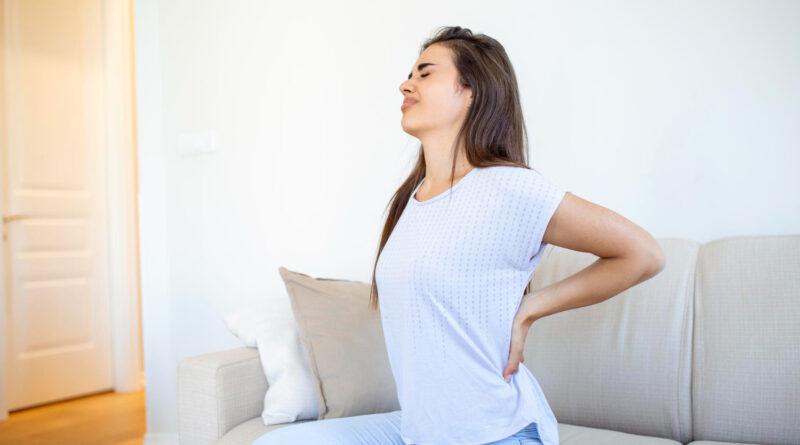Strategies for Coping With Back Pain
Are you one of the millions of people who experience back pain? Dealing with back pain can be challenging, but there are strategies and remedies that can help you cope and find relief. In this article, we will explore various approaches to managing back pain, including the use of massagers as a remedy.
Introduction
Back pain is a prevalent issue that can significantly impact your daily life and overall well-being. It can range from mild discomfort to severe pain, and it may be caused by various factors such as muscle strain, poor posture, herniated discs, or underlying medical conditions. Understanding the causes and types of back pain is essential in developing effective coping strategies.
Coping with Back Pain
When faced with back pain, it’s crucial to seek medical advice to determine the underlying cause and receive appropriate treatment. A healthcare professional can assess your condition, provide a diagnosis, and recommend suitable interventions. Depending on the severity and nature of your back pain, they may suggest physical therapy, exercises, pain medication, or alternative therapies like acupuncture or chiropractic care.
Using Massagers for Back Pain Relief
Buying Massagers Online can be a valuable tool in managing back pain. They offer several benefits, including muscle relaxation, improved blood circulation, and reduced muscle tension. There are various types of massagers available, such as handheld massagers, massage chairs, and massage cushions. When choosing a massager, consider factors like the type and intensity of massage, portability, and user reviews to ensure it suits your specific needs.
Other Strategies for Coping with Back Pain
In addition to using massagers, several other strategies can help you cope with back pain:
- Heat and Cold Therapy: Applying heat or cold to the affected area can help alleviate pain and reduce inflammation. Heat therapy, such as using heating pads or taking warm showers, promotes blood flow and relaxation. Cold therapy, like using ice packs, can numb the area and reduce swelling.
- Relaxation Techniques: Stress and tension can worsen back pain. Practicing relaxation techniques like deep breathing, meditation, or yoga can help reduce stress levels and promote overall well-being.
- Proper Posture and Ergonomics: Maintaining good posture and ergonomics while sitting, standing, and lifting can prevent unnecessary strain on your back. Use supportive chairs, adjust your workstation ergonomically, and avoid slouching to reduce the risk of back pain. Some tips for maintaining good posture include:
- Sit up straight: When you are sitting, keep your back straight and your shoulders relaxed. Avoid slouching or leaning forward.
- Use a supportive chair: A supportive chair can help to keep your back in alignment. If you do not have a supportive chair, you can use a rolled-up towel or pillow to support your lower back.
- Take breaks: If you have to sit for long periods of time, get up and move around every 20-30 minutes.
- Stand up straight: When you are standing, keep your back straight and your shoulders relaxed. Avoid leaning forward or hunching over.
- Use a standing desk: A standing desk can help to reduce the amount of time you spend sitting.
- Lift with your legs: When you lift something heavy, use your legs to do the lifting, not your back. Bend your knees and keep your back straight.
- Regular Movement and Stretching: Engaging in regular physical activity and incorporating stretching exercises into your routine can strengthen your back muscles and improve flexibility. It’s important to avoid prolonged periods of inactivity and take breaks to move and stretch throughout the day
- Healthy Lifestyle Habits: Adopting a healthy lifestyle can support back health. This includes maintaining a balanced diet, staying hydrated, getting enough sleep, and avoiding smoking. These habits contribute to overall well-being and can reduce the risk of back pain.
- Adopting a healthy lifestyle can support back health. This includes maintaining a balanced diet, staying hydrated, getting enough sleep, and avoiding smoking. Some tips for maintaining a healthy lifestyle include:
- Eat a balanced diet: A balanced diet includes plenty of fruits, vegetables, and whole grains. It is also important to limit processed foods, sugary drinks, and unhealthy fats.
- Stay hydrated: Drinking plenty of water helps to keep your body hydrated and can help to reduce pain.
- Get enough sleep: Most adults need 7-8 hours of sleep per night.
- Avoid smoking: Smoking can damage your spine and make you more likely to develop back pain.
Conclusion
Back pain can be a challenging condition to manage, but with the right strategies and remedies, it is possible to find relief. Seeking medical advice, utilizing massagers for back pain relief, and incorporating other coping strategies like heat therapy, relaxation techniques, proper posture, regular movement, and a healthy lifestyle can help alleviate symptoms and improve your quality of life.
FAQs
Q: Are massagers effective for back pain relief?
A: Yes, massagers can be effective in providing relief for back pain. They help relax muscles, improve blood circulation, and reduce tension in the back, leading to pain relief and increased comfort.
Q: How do I choose the right massager for my back pain?
A: When choosing a massager, consider factors such as the type of massage (vibration, shiatsu, percussive), intensity levels, portability, and user reviews. It’s best to choose a massager that suits your specific needs and preferences.
Q: Can relaxation techniques really help with back pain?
A: Yes, relaxation techniques such as deep breathing, meditation, and yoga can help reduce stress levels, which can in turn alleviate back pain. Stress and tension often contribute to muscle tightness and pain, so practicing relaxation techniques can provide relief.
Q: How long should I use a massager for back pain relief?
A: The duration of massager use depends on your comfort and the specific instructions provided by the manufacturer. It’s generally recommended to start with shorter sessions and gradually increase the duration as needed. Follow the guidelines provided with the massager for optimal results.
Q: Can back pain be completely cured?
A: In many cases, back pain can be effectively managed and relieved through various treatments and lifestyle changes. However, the complete cure depends on the underlying cause of the pain, and it may require ongoing management and preventive measures.

